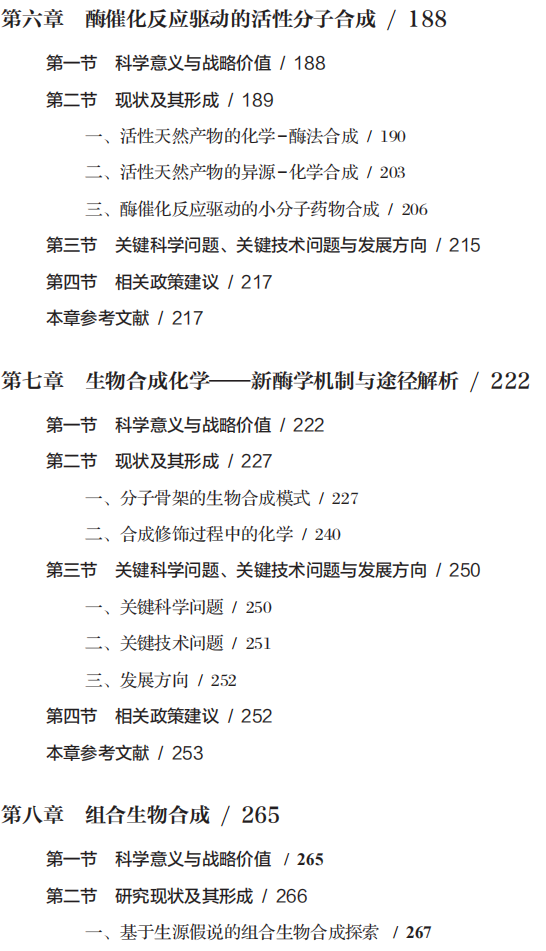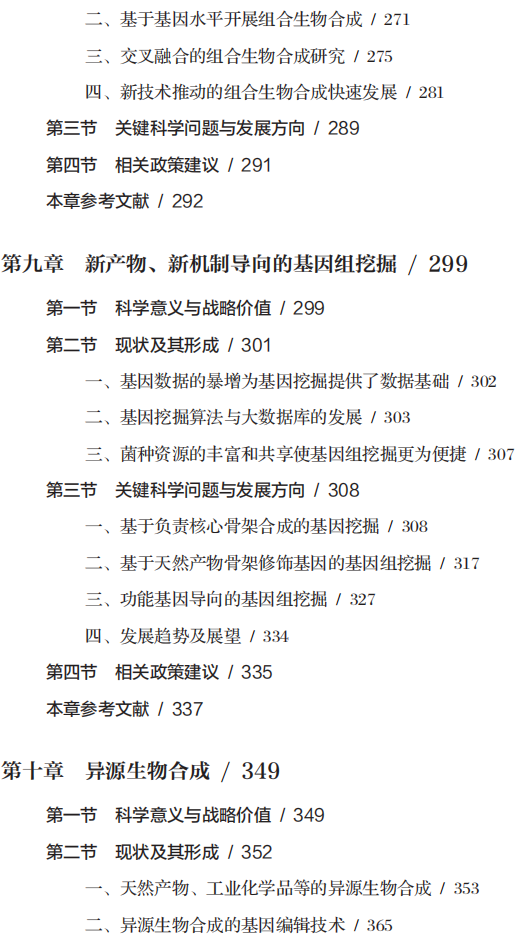




党的二十大胜利召开,吹响了以中国式现代化全面推进中华民族伟大复兴的前进号角。习近平总书记强调“教育、科技、人才是全面建设社会主义现代化国家的基础性、战略性支撑”,明确要求到 2035 年要建成教育强国、科技强国、人才强国。新时代新征程对科技界提出了更高的要求。当前,世界科学技术发展日新月异,不断开辟新的认知疆域,并成为带动经济社会发展的核心变量,新一轮科技革命和产业变革正处于蓄势跃迁、快速迭代的关键阶段。开展面向 2035 年的中国学科及前沿领域发展战略研究,紧扣国家战略需求,研判科技发展大势,擘画战略、锚定方向,找准学科发展路径与方向,找准科技创新的主攻方向和突破口,对于实现全面建成社会主义现代化“两步走”战略目标具有重要意义。
当前,应对全球性重大挑战和转变科学研究范式是当代科学的时代特征之一。为此,各国政府不断调整和完善科技创新战略与政策,强化战略科技力量部署,支持科技前沿态势研判,加强重点领域研发投入,并积极培育战略新兴产业,从而保证国际竞争实力。
擘画战略、锚定方向是抢抓科技革命先机的必然之策。当前,新一轮科技革命蓬勃兴起,科学发展呈现相互渗透和重新会聚的趋势,在科学逐渐分化与系统持续整合的反复过程中,新的学科增长点不断产生,并且衍生出一系列新兴交叉学科和前沿领域。随着知识生产的不断积累和新兴交叉学科的相继涌现,学科体系和布局也在动态调整,构建符合知识体系逻辑结构并促进知识与应用融通的协调可持续发展的学科体系尤为重要。
擘画战略、锚定方向是我国科技事业不断取得历史性成就的成功经验。科技创新一直是党和国家治国理政的核心内容。特别是党的十八大以来,以习近平同志为核心的党中央明确了我国建成世界科技强国的“三步走”路线图,实施了《国家创新驱动发展战略纲要》,持续加强原始创新,并将着力点放在解决关键核心技术背后的科学问题上。习近平总书记深刻指出:“基础研究是整个科学体系的源头。要瞄准世界科技前沿,抓住大趋势,下好‘先手棋’,打好基础、储备长远,甘于坐冷板凳,勇于做栽树人、挖井人,实现前瞻性基础研究、引领性原创成果重大突破,夯实世界科技强国建设的根基。”
作为国家在科学技术方面最高咨询机构的中国科学院和国家支持基础研究主渠道的国家自然科学基金委员会(简称自然科学基金委),在夯实学科基础、加强学科建设、引领科学研究发展方面担负着重要的责任。早在新中国成立初期,中国科学院学部即组织全国有关专家研究编制了《1956—1967 年科学技术发展远景规划》。该规划的实施,实现了“两弹一星”研制等一系列重大突破,为新中国逐步形成科学技术研究体系奠定了基础。自然科学基金委自成立以来,通过学科发展战略研究,服务于科学基金的资助与管理,不断夯实国家知识基础,增进基础研究面向国家需求的能力。2009 年,自然科学基金委和中国科学院联合启动了“2011—2020 年中国学科发展战略研究”。2012 年,双方形成联合开展学科发展战略研究的常态化机制,持续研判科技发展态势,为我国科技创新领域的方向选择提供科学思想、路径选择和跨越的蓝图。
联合开展“中国学科及前沿领域发展战略研究(2021—2035)”,是中国科学院和自然科学基金委落实新时代“两步走”战略的具体实践。我们面向 2035 年国家发展目标,结合科技发展新特征,进行了系统设计,从三个方面组织研究工作:一是总论研究,对面向2035 年的中国学科及前沿领域发展进行了概括和论述,内容包括学科的历史演进及其发展的驱动力、前沿领域的发展特征及其与社会的关联、学科与前沿领域的区别和联系、世界科学发展的整体态势,并汇总了各个学科及前沿领域的发展趋势、关键科学问题和重点方向;二是自然科学基础学科研究,主要针对科学基金资助体系中的重点学科开展战略研究,内容包括学科的科学意义与战略价值、发展规律与研究特点、发展现状与发展态势、发展思路与发展方向、资助机制与政策建议等;三是前沿领域研究,针对尚未形成学科规模、不具备明确学科属性的前沿交叉、新兴和关键核心技术领域开展战略研究,内容包括相关领域的战略价值、关键科学问题与核心技术问题、我国在相关领域的研究基础与条件、我国在相关领域的发展思路与政策建议等。
三年多来,400 多位院士、3000 多位专家,围绕总论、数学等18 个学科和量子物质与应用等 19 个前沿领域问题,坚持突出前瞻布局、补齐发展短板、坚定创新自信、统筹分工协作的原则,开展了深入全面的战略研究工作,取得了一批重要成果,也形成了共识性结论。一是国家战略需求和技术要素成为当前学科及前沿领域发展的主要驱动力之一。有组织的科学研究及源于技术的广泛带动效应,实质化地推动了学科前沿的演进,夯实了科技发展的基础,促进了人才的培养,并衍生出更多新的学科生长点。二是学科及前沿领域的发展促进深层次交叉融通。学科及前沿领域的发展越来越呈现出多学科相互渗透的发展态势。某一类学科领域采用的研究策略和技术体系所产生的基础理论与方法论成果,可以作为共同的知识基础适用于不同学科领域的多个研究方向。三是科研范式正在经历深刻变革。解决系统性复杂问题成为当前科学发展的主要目标,导致相应的研究内容、方法和范畴等的改变,形成科学研究的多层次、多尺度、动态化的基本特征。数据驱动的科研模式有力地推动了新时代科研范式的变革。四是科学与社会的互动更加密切。发展学科及前沿领域愈加重要,与此同时,“互联网 +”正在改变科学交流生态,并且重塑了科学的边界,开放获取、开放科学、公众科学等都使得越来越多的非专业人士有机会参与到科学活动中来。
“中国学科及前沿领域发展战略研究(2021—2035)”系列成果以“中国学科及前沿领域 2035 发展战略丛书”的形式出版,纳入“国家科学思想库 - 学术引领系列”陆续出版。希望本丛书的出版,能够为科技界、产业界的专家学者和技术人员提供研究指引,为科研管理部门提供决策参考,为科学基金深化改革、“十四五”发展规划实施、国家科学政策制定提供有力支撑。
在本丛书即将付梓之际,我们衷心感谢为学科及前沿领域发展战略研究付出心血的院士专家,感谢在咨询、审读和管理支撑服务方面付出辛劳的同志,感谢参与项目组织和管理工作的中国科学院学部的丁仲礼、秦大河、王恩哥、朱道本、陈宜瑜、傅伯杰、李树深、李婷、苏荣辉、石兵、李鹏飞、钱莹洁、薛淮、冯霞,自然科学基金委的王长锐、韩智勇、邹立尧、冯雪莲、黎明、张兆田、杨列勋、高阵雨。学科及前沿领域发展战略研究是一项长期、系统的工作,对学科及前沿领域发展趋势的研判,对关键科学问题的凝练,对发展思路及方向的把握,对战略布局的谋划等,都需要一个不断深化、积累、完善的过程。我们由衷地希望更多院士专家参与到未来的学科及前沿领域发展战略研究中来,汇聚专家智慧,不断提升凝练科学问题的能力,为推动科研范式变革,促进基础研究高质量发展,把科技的命脉牢牢掌握在自己手中,服务支撑我国高水平科技自立自强和建设世界科技强国夯实根基做出更大贡献。
“中国学科及前沿领域发展战略研究(2021—2035)”
联合领导小组
2023 年 3 月
合成科学是分子创制的核心和基础,包含化学合成和生物合成两种重要方式。合成科学与生命、健康、农业、材料和能源等领域密切关联。在当前形势下,合成科学的发展呈现出新的特点,也面临新的挑战。随着化学和生物学领域的发展与技术进步,化学合成和生物合成之间出现由点到面的快速融合与相互促进的趋势,为合成科学带来了前所未有的创新机遇。本书拟从合成化学促进的合成生物学和合成生物学促进的合成化学两个方面入手,总结合成科学的研究特点、发展规律和趋势,凝练关键科学问题、发展思路、发展目标和重要研究方向,为合成科学未来发展的有效资助机制及政策提供建议。本书旨在通过战略研究,在化学合成与生物合成之间建立深度的科学链接,融合两者各自的独特优势,突破传统的学科研究范式,构建跨越化学合成与生物合成的合成科学新方向。
化学合成的发展史是一部与生物科学和技术相伴相随的发展史。生物学促进的化学合成主要是指模拟生物催化(如酶催化的方式)进行化学合成的过程。生物体系的创制能力在催化机制、反应原理、合成策略、分子功能等多个方面都对化学合成的发展有重要的启发、促进和借鉴作用。因此,生物学促进的化学合成除了具备传统化学合成条件耐受性好、规模化容易、底物适用范围广等优点,还具有生物合成高效、精准、绿色的优势,有望实现环境友好、安全经济的合成化学。生物学促进的化学合成主要包括催化剂、反应和复杂分子的合成策略三个层次,在本书中将围绕如下内容展开。
反应是合成化学的工具和基石,生物转化过程的理解能促进仿生反应的发展和应用。仿生反应是通过化学手段模拟生物体中酶催化反应的成/断键方式而进行的化学转化。本书第二章总结了有代表性的五类仿生反应:仿生离子型反应、仿生自由基反应、仿生协同反应、仿生杂原子转移反应和仿生光化学反应。发展新型仿生反应对于丰富化学反应类型和扩展合成化学边界具有重要意义。
催化是合成化学的关键,它决定了合成的效率、选择性和可行性。生物合成促进的化学催化包括对生物酶进行化学模拟的仿生催化(本书第三章)和对酶进行人工改造的定向进化(本书第五章)。本书第三章阐述的仿生催化,是用化学方法在分子水平上模拟生物酶的化学催化技术,主要是基于酶的结构和催化机制,设计并合成人工酶,以模拟和实现酶的催化功能。该章总结了已有的对催化中心的模拟和蛋白质骨架模拟的仿生催化。发展仿生催化,可以综合酶催化和化学催化的优点,使催化剂的活性更高、选择性更好,使合成更加精准、高效、温和、经济与绿色,有利于创造更多的新功能分子,满足医药、农药、材料、能源等多领域发展的需要。本书第五章讲述的是人工酶的新型合成转化。天然酶存在催化类型有限、底物范围狭窄及稳定性较差等问题,大大限制了其应用。通过对酶的工程性改造,设计创造新型的人工酶,从而实现非天然的化学转化,可以扩展酶催化的反应类型,使其在食品加工、饲料、洗涤、材料等领域具有广阔的应用前景。
合成策略是高效构建复杂分子的前提和保障,对复杂分子生物合成过程的理解有助于提炼出高效的合成策略(本书第四章和第六章)。本书第四章讲述的仿生天然产物合成,是以相关生物合成机制或生源假说为启发和指导,模仿生物体内导向天然产物的反应和转化途径,实现天然产物分子及其类似物的高效、快速构建。仿生合成发轫于对天然产物结构和官能团反应性的深刻理解,是推动新合成策略和合成方法研究的灵感源泉,对生物合成机制研究也具有重要的指导意义。本书第六章阐述的酶催化反应驱动的活性分子合成,从策略角度可以分为化学—酶法合成、异源—化学合成和体外酶催化合成三种类型。酶催化反应与传统有机合成的良好结合,为有机合成路线的设计提供了新的思路。
生物合成本质上是一个发生在生物体系中的合成化学过程,即利用生物体内的各种酶促反应,完成化学结构的逐步构筑的过程。生物合成通常以天然存在的功能分子为研究对象,研究范式和发展方式与物理学、化学和生物学及相关技术的进步息息相关,属于典型的交叉学科范畴。随着天然功能分子进化与演变规律认知的不断深入,生物合成研究也从单纯的“学习自然”过程迈向“超越自然”的目标,有力地促进了传统的天然产物化学、药物化学及合成化学等在研究方法和思路方面的变化,同时也为21世纪初兴起的合成生物学在功能分子的创制研究方面提供了理论基础。化学促进的生物合成体现在基因、蛋白质(酶)、细胞,以及反应、途径等不同层次,在本书中将围绕如下内容展开。
解析生物体系中功能分子形成的化学过程,是生物合成研究的主要内容(第七章)。第七章依据天然产物化学结构或生物合成的典型特征,对不同类型的分子骨架组装和组装后修饰相关的酶学机制与规律进行了总结。深入解析天然产物的生物合成途径并阐明相关酶的催化机理,有利于理解生物合成过程中遵循的基本反应规律,有助于利用组合生物合成或合成生物学技术来设计、改造和开发新型的活性天然产物分子,进而探索其发挥的重要生物学功能,最终服务于人类生活和健康。
以创造化合物结构多样性为目标,将不同的生物催化元件或化合物前体作为模块,根据不同的组合方式,在体内或体外经过人为巧妙构思和编辑,从而产生预期的分子多样性群体,是生物合成研究成果应用的重要体现(第八章)。第八章根据组合生物合成的研究理论及研究深度和广度,将其分为四个阶段(即探索期、起步期、拓展期、快速发展期)介绍了组合生物合成的研究进展、现状和存在的问题。
生物合成研究成果应用的另一个重要体现,在于采用基因组挖掘技术发现新产物和新机制(第九章)。通过建立结构特征和基因序列信息之间的逻辑关联,以基因组大数据的生物信息学分析为基础,挖掘和寻找潜在的编码生物合成基因簇并最终获得相应天然产物,是天然产物化学领域研究策略的重大突破。从科学逻辑上看,基因组挖掘策略将天然产物研究的起始对象,从复杂的、具有三维结构的化合物简化至一维的、易于读取和分析的DNA序列信息,可显著提高天然产物发现过程的可预测性和成功率,有望从天然资源中深度挖掘出更多有用的药物分子。
作为一种重要的生物学技术,异源生物合成可以有效弥补合成化学在复杂天然产物药物生产方面的不足,降低大宗及精细化学品、能源产品等的成本,解决环境和资源的协调发展问题(第十章)。第十章将对微生物源、植物源天然产物及工业化学品异源生物合成研究的溯源、发展、现状和发展趋势进行归纳总结,并对影响高效异源生物合成的关键要素—基因编辑技术和底盘细胞进行详细讨论。
生物合成研究属于典型的交叉学科范畴,其研究范式和发展方式与物理学、化学和生物学及相关技术的进步密切相关。第十一章总结了生物合成研究所采用的技术方法,包括化学、物理学、生物学、计算机信息学和其他相关学科等技术方法。根据不同历史阶段生物合成研究所采用技术、策略的不同,该章还对生物合成研究历史的发展脉络进行了梳理。特别是以吗啡、红霉素等为例,对天然产物生物合成研究的经典案例进行了分析,体现了技术发展对领域发展的推动作用。
作为不破不立、对立统一的矛盾体的另一面,生物降解与转化和生物合成不同,主要研究如何利用微生物的代谢能力,将污染物降解成无毒终产物或转化为经济产品,从而安全地处理合成科学产生的海量新型人工化合物,实现变危为安、变无为有、变废为宝、变弱为强。第十二章就生物降解与转化对于合成科学的绿色发展的重要意义进行了阐述。
DNA信息存储与计算是一个新兴的、多学科深度交叉融合的研究方向,对国家开发替代性的数据存储介质、维护生态环境安全和能源安全等具有重要的战略意义(第十三章)。目前该领域正处于取得重大突破与开拓应用的关键阶段。国内DNA信息存储与计算领域刚起步不久,提前做好对DNA信息存储与计算技术的战略布局,有利于在新兴产业中提前立足、在国防安全中提前防御,并推动一批基础与前沿交叉学科的发展。
对生物分子结构和功能关系的理解有助于各种生物功能大分子(如糖、蛋白质和核酸)的设计和发展,在本书中将围绕如下三章展开。①第十四章讲述糖的合成。应用合成化学的新趋势、新进展和新手段,发展糖苷键的高效构建方法、开发糖链的有效组装策略,高效获取复杂糖链和糖类药物是糖合成研究的首要目标与发展方向。②第十五章阐述蛋白质的合成。利用高化学选择性的连接反应将多肽片段组装成完整的、具有生物活性的蛋白质,适用于精准制备生物方法难以获取的均一、选择性修饰的蛋白质样品,有助于生化功能机制研究、蛋白质药物与功能材料研发,为靶向化学干预、疾病的诊疗和病理解析提供新思路。③第十六章描述核酸的合成。主要研究方向包括基因组合成、核酸的化学法和酶法合成、核酸高通量合成、功能核酸的开发等。
Abstract
Synthesis, which includes chemical synthesis and biosynthesis, is a fundamental approach to generate molecules. The science of synthesis is closely related to the fields of biology, human health, agriculture, materials, and energy. Currently, the science of synthesis has new features and meanwhile faces new challenges. Based on the recent advances in chemistry and biology, the integration of chemical synthesis and biosynthesis provides an unprecedented opportunity for the development of the science of synthesis. In this strategic study, we focus on biology-facilitated chemical synthesis and chemistry-facilitated biosynthesis and summarize the characteristics, challenges, and directions of the science of synthesis. We hope to establish a linkage between chemical synthesis and biosynthesis and provide insight into the next-generation synthesis which is expected to break the boundary between chemistry and biology.
The development of chemical synthesis is associated with the development of biological science and technology. Biology-facilitated chemical synthesis mainly refers to the chemical synthesis that mimics the biological transformation (e.g., enzymatic catalysis). Chemists are inspired by biological systems in many aspects, such as the catalyst design, reaction mechanism, synthetic strategies, and structure-function relationship. Thus, biology-facilitated chemical synthesis offers both the advantages of conventional chemical synthesis, including simplicity and fexibility, and those of biosynthesis, including high selectivity and efciency and environmental friendliness. In the following fve chapters, biology-facilitated chemical synthesis is described in detail from the perspectives of reactions, catalysts, and strategies.
Reactions are fundamental tools of synthetic chemistry. The understand-ing of biosynthetic mechanisms in reaction can facilitate the development of biomimetic reactions, which mimic the bond formation/cleavage patterns of their biosynthetic counterparts. Five representative classes of biomimetic reactions are summarized in Chapter 2: biomimetic ionic reactions, biomimetic radical reactions, biomimetic pericyclic reactions, biomimetic heteroatom transfer reactions, and biomimetic photochemical reactions. The development of new biomimetic reactions would further enrich our chemical toolbox.
Catalysis is an important field of synthetic chemistry. The use of catalysis significantly improves the efficiency of synthesis and reduces environmental pollution. Biology-facilitated catalysis is discussed in two aspects: biomimetic catalysis (Chapter 3) and directed evolution of enzymes for non-natural reactions (Chapter 5). Taking advantages of the core structures and catalytic mechanisms of enzymes, chemists design simplifed ligands and catalytic systems for various catalytic processes. Two strategies for developing biomimetic catalysis are introduced in Chapter 3: mimicking the catalytic center and mimicking the protein scafold. Biomimetic catalysis ofers the advantages of enzyme catalysis and chemical catalysis, which is expected to play an increasingly more important role in the synthesis of functional molecules. Chapter 5 focuses on directed evolution of enzymes, which helps to overcome the problems of natural enzymes, such as limited reaction types and substrate scope and unsatisfactory stability. The most exciting advance in this area is to engineer enzymes for catalyzing non-natural reactions. The combination of the design from chemists and the diversity generated by protein evolution demonstrates remarkable power in the search for new catalysts.
Synthetic strategies form the basis of the logic of multi-step synthesis of complex molecules. Biosynthesis provides valuable information for the development of useful strategies for the synthesis of complex molecules, in particular natural products (see Chapters 4 and 6). In Chapter 4, biomimetic natural product synthesis is discussed. As a fundamental approach to natural product synthesis, biomimetic synthesis ofers many advantages, due to the intrinsic correlation between the biogenesis and the structure of natural products. It stimulates the development of various useful strategies and meanwhile provides crucial clues for elucidation of biosynthetic pathways. Empowered with chemists’logic, enzymatic reactions can serve as powerful tools for complex molecule synthesis, as described in Chapter 6. The combination of strategies and methods of chemical synthesis and enzymatic reactions proves to be superior to conventional chemical synthesis in the selected cases.
Biosynthesis is essentially a chemically synthetic process that occurs in a biological system, where various enzymatic reactions are employed to furnish chemical structures through a multistep pathway. Biosynthetic studies often target naturally occurring functional molecules and fall into a scope of multidiscipline, as related research paradigms and developing ways are highly associated with the advances in the fields of physics, chemistry and biology. With the deepening of knowledge in the regularity of molecule evolution and developing in nature, biosynthetic studies are stepping from “learning the nature” to “surpassing the nature”, greatly facilitating changes in the research methods and strategies of traditional natural products chemistry, medicinal chemistry and synthetic chemistry. In addition, these studies lay the theoretical foundation of synthetic biology, a new interdiscipline that emerged in the beginning of the 21st century, in terms of the creation of functional molecules. Studies on chemistry-facilitated biosynthesis, which are discussed in the following seven chapters in this strategic study, can be conducted at a variety of levels, including encoding genes, catalytic enzymes, biosynthetic pathways and producing cells.
Dissection of the chemical processes for the formation of functional molecules in biological systems serves as one of the main objectives of biosynthetic studies. Chapter 7 summarizes the enzymatic mechanisms of skeleton formation and tailoring that are associated with a variety of natural products classifed according to their structural characteristics and biosynthetic origins. Deep insights into the pathways and related catalytic mechanisms facilitate the understanding of the regularities of enzymatic reactions that are followed in the biosynthesis and subsequently the creation and discovery of new (designed) functional molecules by engineering and mining with various combinatorial biosynthesis and synthetic biology approaches. These studies can provide access to important biological functions or processes and eventually beneft the life and health of human being.
The importance of biosynthetic studies is exemplified by diversity-oriented biosynthesis, which occurs through the combination and permutation of different biological elements or chemical precursors following an idea of combinatorial chemistry or elaborate designing editing. Based on the theoretical formation and development that can be classifed into the four periods of exploring, starting, developing and rapidly developing, Chapter 8 introduces the progress, current situations and existing problems of the studies on combinatorial biosynthesis.
In addition, the importance of biosynthetic studies is exemplified by genome mining, which allows for the discovery of new molecules or new biosynthetic mechanisms (as shown in Chapter 9). Based on the established relationship between characteristic structures and gene sequences, the bioinformatics analysis of genome data can reveal the potential biosynthetic gene clusters and their associated molecules, thereby representing one of the signifcant breakthroughs in the strategies of natural products chemistry. Genome mining approaches, which simplify the target molecules with complex, three-dimensional structures to simple, readable and analyzable DNAsequences, can greatly improve the predictability and success rate and eventually lead to the discovery of pharmaceutically useful molecules from natural sources.
As an important biotechnology, heterologous biosynthesis can effectively make up for the deficiency of chemical synthesis in the production of natural medicines with complex structures, lower the costs of staple/refined chemicals and energy products and facilitate the coordinated development of environmental and resources. Chapter 10 reports the history, development, current situations and future in the heterologous biosynthesis of natural products (either microbial or plant) and industrial chemicals and particularly discusses gene editing technologies and chassis cells, both of which are of importance to the efectiveness of heterologous biosynthesis.
Biosynthesis is a typical interdescipline whose research paradigms and developing ways are closely related to the advances of physics, chemistry and biology and their associated technologies. Chapter 11 summaries the strategies/methods used in biosynthesis, where technologies relevant to chemistry, physics, biology, computational informatics and others are involved. According to the strategies/methods used in different stages, this chapter reviews the history of the development of biosynthetic studies. In particular, the analysis of classical cases, e.g., those for morphine and erythromycin, highlights the signifcance of technological advance to feld development.
In contrast to biosynthesis, biodegradation or transformation is a process through which the metabolic capability of microorganisms can be used for degrading or detoxifying pollutants (especially the results from chemical synthesis) to chemical products with economic values. Chapter 12 states the signifcance of biodegradation or transformation to the green development of the science of synthesis.
DNAinformation storage/computing is a newly emerging interdisciplinary direction that plays an important role in developing alternative data storage media and maintaining security for ecological environment and energy (as shown in Chapter 13). At present, this research feld has just started in China, and is at the key stage of making major breakthroughs and exploring applications. The strategic plan of this research direction will be conducive to early foothold in emerging industries, as well as national defense and security. In addition, it will promote the development of a number of basic and cutting-edge interdisciplinary studies.
Synthesis of biomacromolecules including carbohydrates, proteins, and nucleic acids has long been an active field at the chemistry-biology interface. In Chapter 14, the recent advances in the synthesis of carbohydrates, in particular the development of the state-of-the-art methods for glycosylation and strategies for polysaccharide assembly, are summarized. Chapter 15 focuses on the synthesis of proteins. Natural chemical ligation has become a powerful tool for the synthesis of homogeneous, selectively modified proteins that are otherwise difficult to obtain. This approach facilitates the functional study of biologically active proteins. The synthesis of nucleic acids is described in Chapter 16, which covers the following topics: the genome synthesis, the chemical/enzymatic nucleic acid synthesis, the high-throughput nucleic acid synthesis, and the development of functional nucleic acids.








